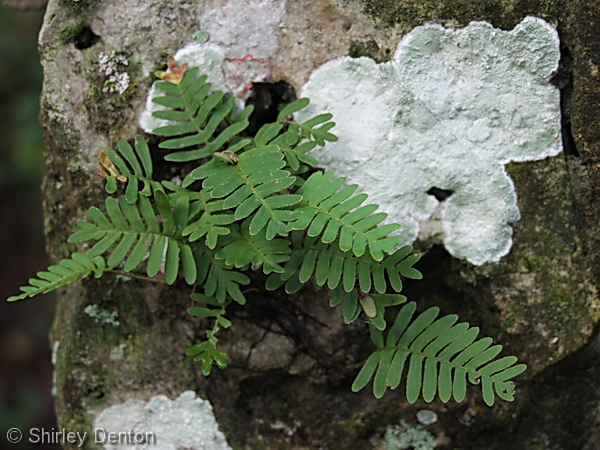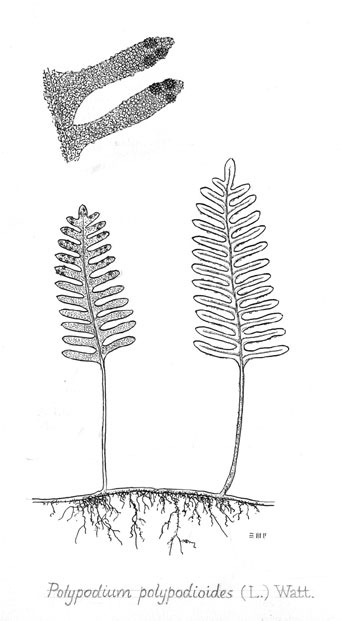|
Hardy Fern Home P. polypodioides resources All Ferns � Polypodiaceae �� Pleopeltis
�Other Genera
|
| Pleopeltis polypodioides | ||
Resurrection fern, Gray's polypody | ||
|
Etymology
Polypodioides means like a polypod
Description
Rhizome: creeping, branching, slender, to 2 mm diam., scales lanceolate, base and margins light brown, with dark central stripe, clathrate toward center.
Frond: 25 cm high by 5 cm wide, evergreen, monomorphic, blade/stipe ratio: 3:2. Stipe: jointed at base, straw-colored, grooved, densely scaly when young, falling soon; scales often overlapping, margins mostly entire, vascular bundles: 3. Blade: pinnatifid, oblong to narrowly lanceolate, usually widest near middle, occasionally at or near base, leathery, rachis sparsely scaly below, glabrous above; conspicuous peltate, gray scales on the lamina below. Pinnae: 8 to 14 pair, linear, entire, blunt at the tip, about 3 mm wide by 25 mm; margins entire; veins mostly free with occasional netting. Sori: round, discrete, sunken, protruding on the upper surface, midway between margin and midrib to nearly marginal; on all but the lowest pinnae of fertile fronds, indusium: absent, sporangia: yellow to brown at maturity. Culture
Habitat: epiphitic in the southern part of the range, epipetric in the northern area.
Distribution: southeastern United States.
Hardy to -20�C, USDA Zone 6.
Distinctive Characteristics
The gray, peltate scales on the lower surface are a diagnostic character (see photos).
Synonyms
Polypodium polypodioides (linnaeus) Watt Pleopeltis polypodioides var. michauxiana (Weatherby) E. G. Andrews & Windham Acrostichum polypodioides L. Pleopeltis polypodioides (L.) Watt. |
|
|

Polypodium polypodioides. Epiphytic on live oak, Quercus virginiana, competing with lichen and moss. �Photo � Shirley Denton, from her web site, with permission. |
